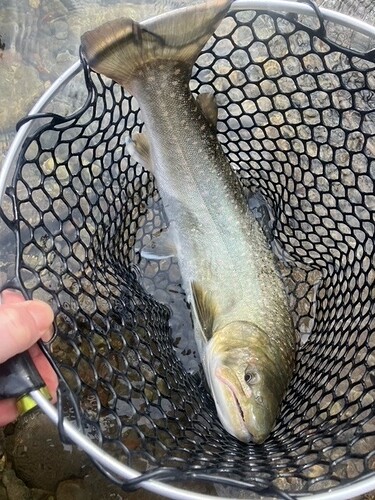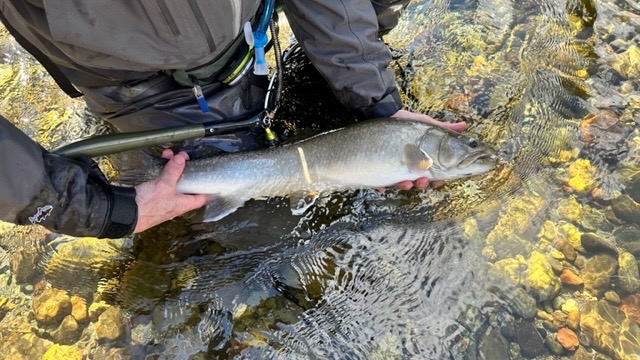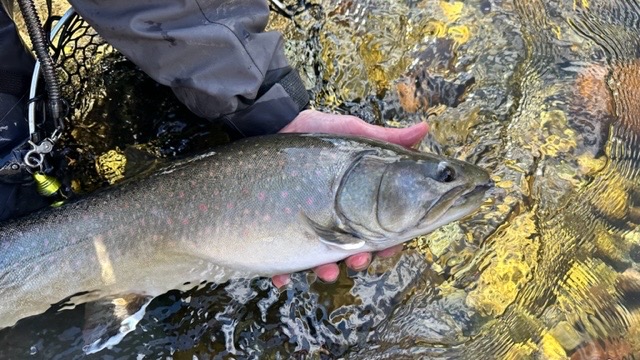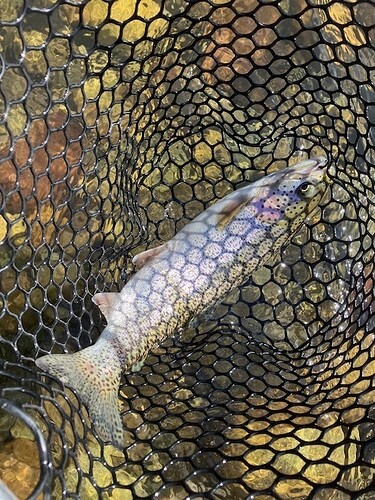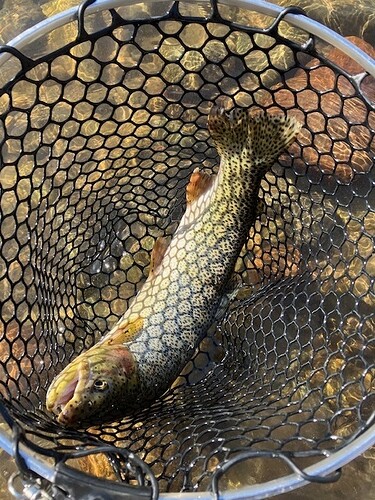Hello,
I figured that I would move the conversation we have been having in the market place to the main forum.
I have been fishing fixed lines in British Columbia for the last year and a half catching mostly trout and the odd coho jack. I have primarily used a TB Traveller 39 as an all around rod and a Keiryu x 45 to cast weighted flies. I won’t call this thread Tenkara because most of my fishing in the winter is using weighted nymphs but during the summer and fall I prefer to use kebari and the odd DH caddis.
On the two rods mentioned above I have landed a few trout approaching the 20” mark, a few char up to 22” and a couple coho jacks which were around 16-18”. In order to pursue the larger anadramous fish we have in our coastal rivers i purchased a Multiflex Sumui 5.0 last fall and received it this spring. The rod an it’s application have been discussed at length on the “wtb multiflex sumui 5.0” thread in the market place if you are interested in reading it there.
I figured that I would use this thread to share some catches as well as to discuss techniques and tactics that are working for me.
On my second outing with the rod I caught a bull that was probably around 23” but very well fed and in a weight class that I had yet to encounter (at least without the fish immediately breaking off). I shared a photo of the fish in the other thread but I will add it here as well.
My next trip out I hooked into and landed an even larger fish however when the fish took its first real run the rod failed completely (exploded into multiple parts) at the second section. I had to quickly follow the upper sections of the rod out into the river and when I recovered the rod was able to net the fish. Here is a photo that a friend took of it.
Obviously I am a bit disappointed that the rod failed. I had purposely used 5x tippet to minimize the chance of something like that occurring. I have never had a rod fail like that on me and I have landed bull trout above 20” on both of the rods previously mentioned.
On my side I could have moved with the fish as it ran rather than trying to stop its run with just the rod. I feel like I should have also utilized more side pressure to move the fish back out of the current rather than simply trying to stop its run.
I was wondering if anyone else had any opinions? I reached out to Plat (where I purchased the rod) and their reply was that it is very unlikely that the rod would be covered by the manufacturer’s warranty but did not have any real suggestion about what would cause the rod to fail before the tippet. I am going to purchase another section but I am just a bit on the fence because even though this fish was large there are much larger fish in our rivers. Furthermore i was extremely lucky that the flow was very low the day I was fishing which allowed me to wade out and recover the rod which would not be possible most days.
Any thoughts would be appreciated as I mull over how to proceed. I may have to go back to the Keiryu x. Even though it’s a broomstick the only time it has ever broken was when I accidentally stepped on it ![]()
